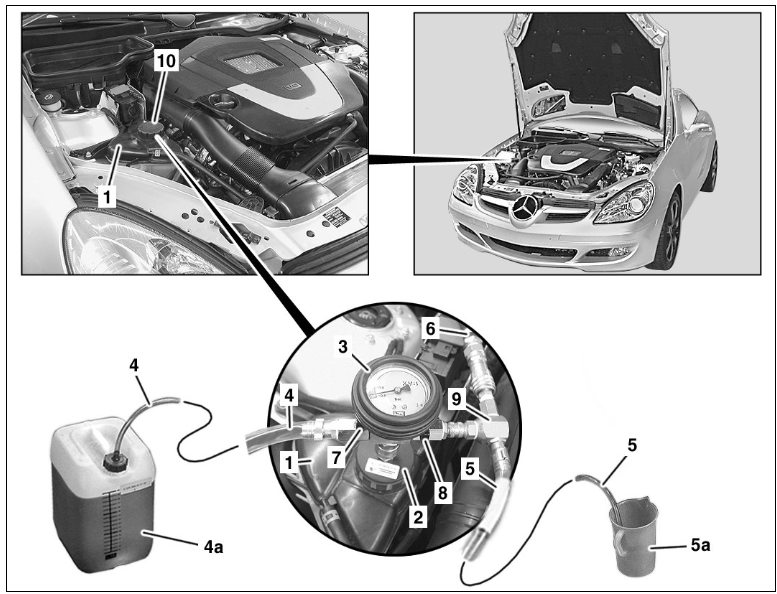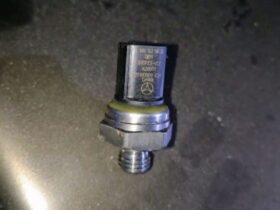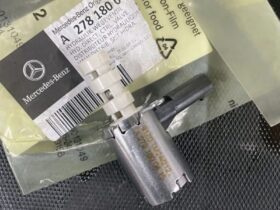Table of Contents
Where Does Engine Coolant Go? : A Case Study on a Mercedes-Benz E300
The question Where Does Engine Coolant Go? is one that many Mercedes-Benz E300 W212 owners might ask, especially when faced with an unexplained drop in coolant levels. In this article, we’ll explore a real-life case where a vehicle came into the workshop with this very issue. By the end, we’ll have a clear understanding of where engine coolant can go and how to address such a problem.

Vehicle: Mercedes-Benz E300 W212 with OM651 Engine
Complaint: Where Does Engine Coolant Go
A Mercedes-Benz E300 W212 equipped with OM651 Engine arrived at our workshop with a complaint: the coolant level in the expansion tank was decreasing without any apparent reason. The owner was worried about potential overheating and wondered, Where Does Engine Coolant Go?
Step 1: Diagnostic Check
To start, I conducted a thorough diagnostic check on the vehicle. Surprisingly, no fault codes were present. This meant that the vehicle’s onboard computer hadn’t detected any issues related to the coolant system. However, the visible drop in coolant levels indicated that something was definitely wrong.
Step 2: Coolant Pressure Test
Next, I performed a coolant pressure test to identify any hidden leaks. During the test, the pressure in the manometer began to decrease, suggesting a leak within the coolant system. This decrease in pressure was a key indicator that coolant was escaping somewhere, but the exact location was still unknown.
Step 3: Inspecting the Coolant System
With the pressure test confirming a leak, I moved on to inspect all components related to the coolant system. I checked the radiator, hoses, expansion tank, and other connections. After a careful inspection, I found the culprit: a small but significant leak in the engine coolant pump.
Step 4: Repair and Solution
To fix the issue, I replaced the faulty engine coolant pump. After the replacement, it was essential to bleed the coolant system to remove any air pockets that could cause overheating or improper circulation.




Step 5: Test Drive and Confirmation
After completing the repair, I took the Mercedes-Benz E300 W212 for a test drive. The coolant level remained stable, and there were no further signs of leakage or overheating. The problem was successfully resolved, and we finally had the answer to the question: Where Does Engine Coolant Go?
Conclusion
This case study highlights the importance of thorough diagnostics in identifying and resolving coolant-related issues. In this instance, the answer to Where Does Engine Coolant Go? was a leak in the engine coolant pump, a problem that was quickly addressed and resolved.
If you ever face a similar issue, remember to consider all components of the coolant system, and don’t hesitate to seek professional assistance to keep your vehicle running smoothly.
Is bleeding coolant system necessary?
Yes, bleeding the coolant system is necessary after draining or replacing the coolant in a vehicle. This process removes air pockets (airlocks) that can become trapped in the cooling system. If not removed, these air pockets can prevent proper coolant circulation, leading to overheating, reduced efficiency, and potential engine damage.
Bleeding ensures that the coolant flows smoothly throughout the system, maintaining optimal engine temperature. Many modern vehicles have specific procedures or bleed valves to help release trapped air, so it’s essential to follow the manufacturer’s guidelines to ensure proper cooling system function.

Cooling system bleeding
Cooling system bleeding is the process of removing trapped air from the vehicle’s cooling system after draining, refilling, or replacing the coolant. Air pockets, or airlocks, can get trapped in the system during these procedures, which can disrupt the flow of coolant and lead to overheating or inefficient engine cooling.

Steps for Cooling System Bleeding:
1. Park the Vehicle: Ensure the vehicle is on a level surface to prevent air from getting trapped in high points of the cooling system.
2. Place the coolant reservoir (4a) of the radiator vacuum filling device at the same height as the coolant expansion tank (1).
3. Unscrew the cooling system cap (10) and screw the test cap (2) onto the coolant expansion tank (1).
4. Insert the control unit (3) onto the test cap (2).
5. Insert the Venturi nozzle (9) onto the control unit (3).
6. Close the drain valve (8) and the inlet valve (7).
7. Connect the coolant supply hose (4) to the coolant reservoir (4a). To prevent air from being drawn into the coolant reservoir (4a) and to ensure traceability of the engine cooling system capacity in the vehicle, always fill the coolant reservoir (4a) completely.
8. Immerse the air vent hose (5) into an empty container (5a).
9. Connect the compressed air hose (6) to the Venturi nozzle (9) and supply it with pressure. There must be an overpressure of at least approximately 8 bar in the compressed air supply so that the Venturi nozzle (9) can generate sufficient vacuum.
10. Open the drain valve (8). A vacuum is then produced in the engine cooling system.
11. Open the inlet valve (7) until the supply hose (4) is filled with coolant, and then close the inlet valve (7).
12. Close the drain valve (8) when the display on the control unit (3) is in the green range.
13. Remove the compressed air hose (6) from the Venturi nozzle (9) and check if the vacuum remains stable for 30 seconds. If not: => Check the condition of the hoses and connections, repair them if necessary, and generate the vacuum again.
14. Seal the inlet valve (7) and the drain valve (8).
Why It’s Important:
Bleeding the cooling system ensures that the coolant circulates properly, maintaining the engine at the correct operating temperature and preventing overheating. Failure to bleed the system can lead to engine damage, poor heater performance, and other cooling-related issues.









Leave a Reply